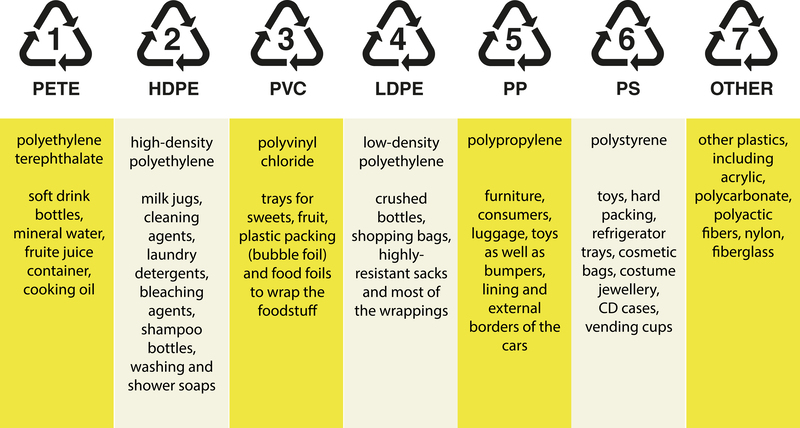Innovative Recycling Tips for Classrooms and Schools
In today's rapidly changing world, schools and classrooms have a pivotal role in educating young minds about sustainability and environmental stewardship. By incorporating innovative recycling strategies, educational institutions can promote waste reduction, inspire eco-conscious habits, and cultivate a generation equipped to tackle global challenges. Whether you're a teacher, school administrator, student, or parent, this comprehensive guide will help you implement effective and creative recycling solutions in your learning environment.

Why Recycling in Schools Is Vital
Recycling in schools and classrooms does more than reduce waste. It nurtures responsibility, encourages critical thinking, and nurtures environmental leaders of the future. The benefits extend beyond ecological impacts:
- Reduces the carbon footprint of educational institutions.
- Lowers waste management costs, saving money for other resources.
- Promotes teamwork and hands-on learning among students.
- Sets an example for families and the broader community.
- Supports local recycling programs and green businesses.
Building a Schoolwide Recycling Culture
1. Appoint Student Eco-Leaders
Empower your students by forming a Green Team or Eco-Club. Select a group of enthusiastic students to lead recycling efforts, coordinate activities, and educate peers. Student ambassadors can monitor recycling bins, organize campaigns, and act as role models.
2. Conduct a Waste Audit
Start your journey by assessing the types and quantities of waste generated. An eye-opening waste audit engages the whole school and provides a baseline for improvement. Involve students by having them examine trash to identify the most common disposable items and materials that could be recycled or upcycled instead.
3. Clear, Accessible Recycling Bins
Placement and labeling of recycling bins are crucial. Place clearly marked bins in hallways, classrooms, cafeterias, and common areas. Use vivid signs with icons and images for better understanding, especially for younger children. Don't forget to educate everyone on what can and cannot be recycled locally.
4. Launch Engaging Recycling Campaigns
Ignite excitement and friendly competition with classroom and school-wide challenges. Examples include:
- Zero Waste Week: A challenge to minimize landfill waste over a set period.
- Recycling Races: Classes compete to collect the highest volume of recyclables.
- Art from Trash: Organize an exhibition of creative art projects made from reused materials.
Celebrate accomplishments with rewards like certificates, class parties, or special privileges. Share your successes on school websites and social media to inspire others!
5. Integrate Recycling Into Curriculum
Make recycling a cross-curricular theme that goes beyond science lessons. Connect recycling to math (data collection, graphing), language arts (writing essays or stories about waste reduction), social studies (analyzing global waste issues), and art (upcycled crafts).
Creative Classroom Recycling Ideas
1. Upcycled Classroom Supplies
Rather than buying new, transform common waste items into classroom essentials:
- Magazine holders from cereal boxes.
- Pencil organizers from tin cans or jars.
- Whiteboard erasers from scraps of old t-shirts.
Encourage students to brainstorm their own upcycling projects every month!
2. Digital Assignments to Reduce Paper Waste
Embrace technology to minimize printing. Use online learning platforms for homework submissions, quizzes, and group projects. If printing is necessary, print double-sided and reuse single-sided sheets as scrap paper.
3. Recycling-Themed Learning Stations
Set up hands-on learning stations where students sort items, explore materials, and discover new uses for recycled objects. These interactive stations make recycling tangible and memorable.
4. Compost in the Classroom
Start a classroom compost bin for fruit peels, lunch scraps, and paper towels. Teach students about decomposition and the benefits of compost for gardening projects, even in small indoor pots.
5. Reusable Lunch Initiatives
Encourage students to bring lunches in reusable containers rather than single-use bags and wrappings. Host waste-free lunch days and track the difference it makes.
Schoolwide Innovative Recycling Strategies
1. Partner with Local Recycling and Upcycling Organizations
Form partnerships with nearby recycling facilities, charities, and green enterprises. They can provide bins, pick-up services, and guest speakers. Consider setting up programs to collect hard-to-recycle items like:
- Batteries
- Printer cartridges
- Old electronics (e-waste)
- Textiles
- Plastic film and wrap
2. Encourage Textile and Clothing Drives
Organize regular clothing donation drives as many textiles can be recycled or reused. Engage the whole community and teach students about the global impacts of textile waste.
3. Build an Eco-Garden Using Upcycled Materials
School gardens are fantastic for learning about sustainability. Use recycled materials as planters, paving stones, garden markers (e.g., painted rocks, old cutlery), or even watering cans made from plastic bottles.
4. Host a School Recycling Fair
Invite local experts, host interactive booths, display student projects, and set up recycling demonstrations. Make it a fun, educational community event that raises awareness and motivates ongoing action.
5. Adopt a No-Single-Use Plastics Policy
Transition to reusable water bottles, cutlery, dishes, and straws in cafeterias and during school events. Educate the community about the environmental harms of single-use plastics and offer creative alternatives.
Specialized Recycling and Upcycling Programs
1. TerraCycle Programs
Enroll your school in TerraCycle recycling programs, which accept hard-to-recycle items like chip bags, snack wrappers, and art supplies. Many programs reward schools with points redeemable for charitable donations or school supplies.
2. Electronics Recycling Drives
Collect old cell phones, tablets, and laptops from the community. Partner with certified e-waste recyclers to responsibly handle and recycle electronics, reducing toxic waste.
3. Art Supply Reuse Centers
Set up a central location for sharing gently used art and classroom supplies, reducing the need to purchase new items. Encourage donations from families and local businesses.
Using Technology to Boost Recycling Engagement
1. Recycling Apps and QR Codes
Incorporate technology to streamline recycling education. Use apps and QR codes on recycling bins to provide information on proper sorting, recycling facts, and challenges for students.
2. Track Progress Digitally
Create digital "recycling dashboards" that display monthly waste diversion and recycling rates schoolwide or by classroom. Celebrate milestones on your school's website or social media platforms.
Engaging Families and the Community
1. Family Recycling Challenges
Encourage families to participate in home recycling contests, sharing their creative solutions with the school. Highlight their efforts in newsletters or at assemblies.
2. Community Clean-Up Days
Organize neighborhood events to collect litter and recyclables from school grounds and beyond. Reward participation and provide valuable lessons in civic engagement.
Top Tips for Sustaining School Recycling Programs
- Regularly refresh educational messaging about recycling in classes, assemblies, and through school communications.
- Assign responsibility for bin maintenance and data tracking to staff members or student leaders.
- Stay updated with local recycling guidelines to ensure compliance.
- Solicit feedback from students and staff to improve initiatives.
- Integrate recognition for recycling achievements into school awards or report cards.

Overcoming Common Challenges in School Recycling
Even with creative ideas, some obstacles may arise. Address them proactively:
- Contamination of recycling bins: Provide clear signage, ongoing education, and monitor bins regularly.
- Lack of student engagement: Make recycling fun with competitions, rewards, and visible results.
- Insufficient funding: Seek grants, community sponsorship, or fundraising opportunities focused on sustainability.
- Space constraints: Use compact bins and focus on big-impact materials like paper and bottles.
Conclusion: Empowering the Next Generation with Innovative Recycling
Innovative recycling in schools and classrooms is not just about sorting waste--it's about fostering a culture of resourcefulness, curiosity, and environmental responsibility. By implementing some of these creative strategies, your school can reduce its ecological footprint, save resources, and inspire students to become lifelong stewards of the earth. Start small, celebrate every success, and watch your school community blossom through sustainable action!
Remember: The journey to a greener future begins with a single step--or a single recycled item--in your classroom or school. Let's make every item count!